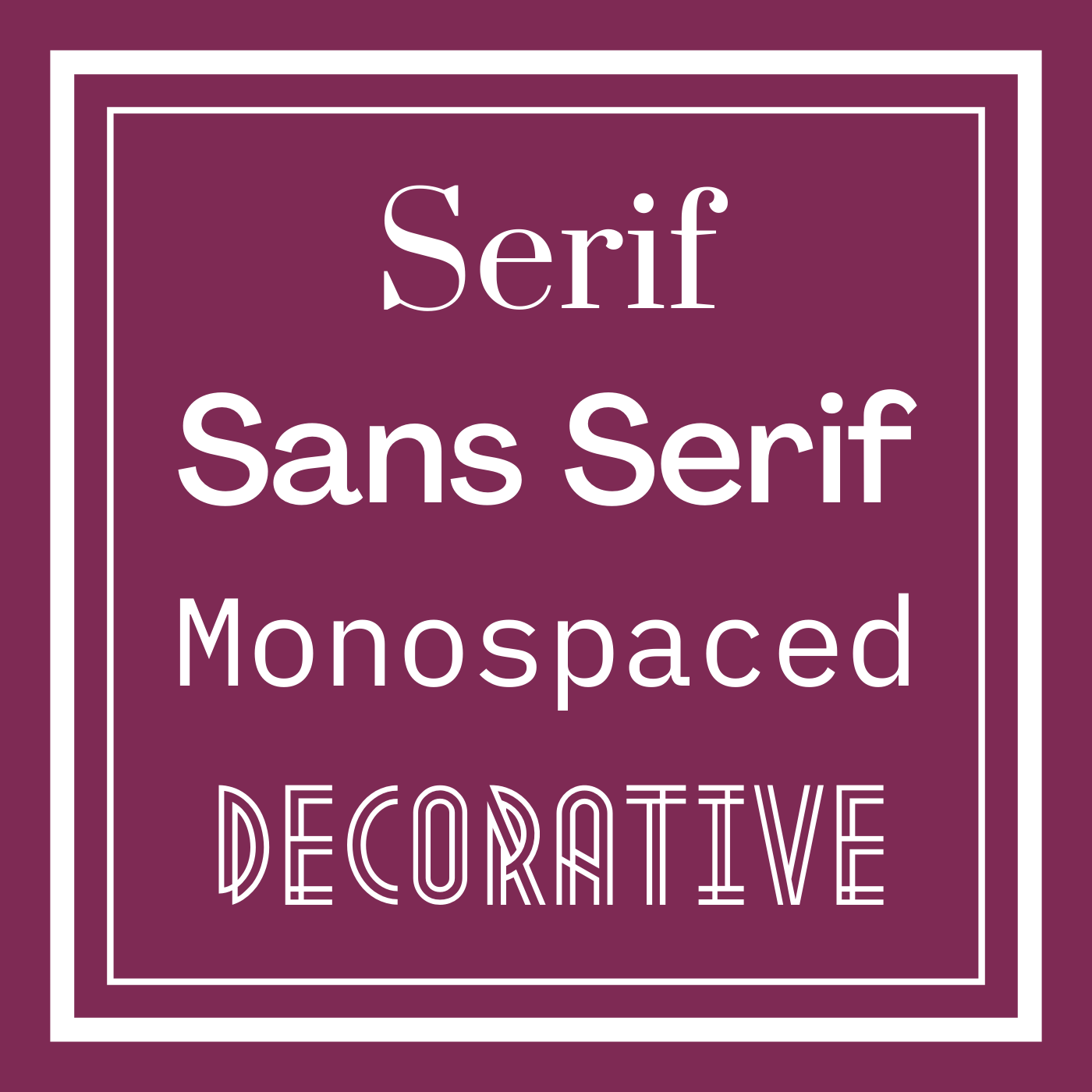Welcome back to education with Emily. Today we’re talking about fonts as an element of design. Now I consider fonts to be an element, not a principle of design. That means it’s not a rule I apply to design but more of a part of the design itself. Fonts are a part of every website in one way or another and can make a big impact.
First I feel like we need an explanation of what kind of fonts there are. Fonts are usually grouped into 3 or 4 categories: serif, sans-serif, decorative, and monospace.
- Serif fonts are what you will typically see in a novel. Most commonly used in print as it is easier to read and has little “feet” at the end of each ligament. Times New Roman is a good example of this.
- Sans-serif fonts have no “feet” and are used more commonly on the web. Helvetica and Arial are both examples of sans-serif fonts.
- Monospace fonts are fonts with each letter occupying the same amount of horizontal space. “Mono” meaning one; one space. Fonts that look like they came from an old typewriter can be categorized as monospace.
- Decorative fonts can be script or brush-stroke fonts that don’t fall into the other categories.

Fonts can give off very different moods depending on how you use them. Typically, serif fonts will seem more serious in nature. You’ll see them a lot in law firms, magazine publications, or maybe the upscale restaurant. They can evoke a more traditional feel and typically look more rigid. Sans serif fonts, on the other hand, feel more relaxed and you’ll see them more for tech-focused companies or gyms. Of course, there are always exceptions. I will use decorative and monospace fonts sparingly or when a design really calls for it. Typically I can use them as accents throughout the site or to call specific attention to a piece of content.
When working with a new website design I first look to the branding from the client to determine where I will start. Sometimes a logo will be using a particular font that I will try to mimic through the site, or I find a font that pairs well and use that. Often, it’s a combination of both. Other times, the client has a set of brand guidelines that will include a font choice, which makes the font decision simple. Either way, fonts can make a big difference in how we perceive a website design. How are you using fonts in your branding and website?

